Abstract
Semen was collected from 50 men occupationally exposed to carbaryl (1-naphthyl methyl carbamate) in a produciton plant for durations of 1 to 18 years and compared to semen from a control group of 34 unexposed, newly-hired workers. Employment, fertility, health, personal data, and blood samples were collected for each individual. Semen samples were analyzed for changes in sperm count, morphology, and frequency of sperm carrying double flourescent bodies (YFF). As a group, the exposed workers showed a significantly higher proportion of sperm with abnormal head shapes than did the control group (p < 0.005). Age, smoking habits, and medical problems did not appear to affect this result. This finding appears to be limited to men working in the carbaryl production area at the time of sampling. Sperm count and YFF did not show similar differences, which may be because they are known to be statistically less sensitive to small changes. Formerly exposed workers (away from carbaryl for an average of 6.3 years) showed a marginally significant elevation in sperm abnormalities compared to controls (p < .05, one-tailed statistical analyses) suggesting that the increase in abnormal morphology may not be reversible. However, the question of reversibility is sensitive to confounding factors and small sample sizes and, therefore, requires further study.
With these data a definitive link between carbaryl exposure and human seminal defects cannot be established. Although a distinct effect on sperm morphology was seen in the exposed group, the increases in sperm shape abnormalities were not related to exposure dose (estimated by number of years on the job or job classification during the year prior to semen collection). Inexplicably, the increases in sperm abnormalities were seen primarily in currently exposed men who had worked with carbaryl for less than approximately 6 years. These findings suggest the need for further study since other workplace-related factor(s) may be responsible for the elevated sperm abnormalities seen in this study.
Full text
PDF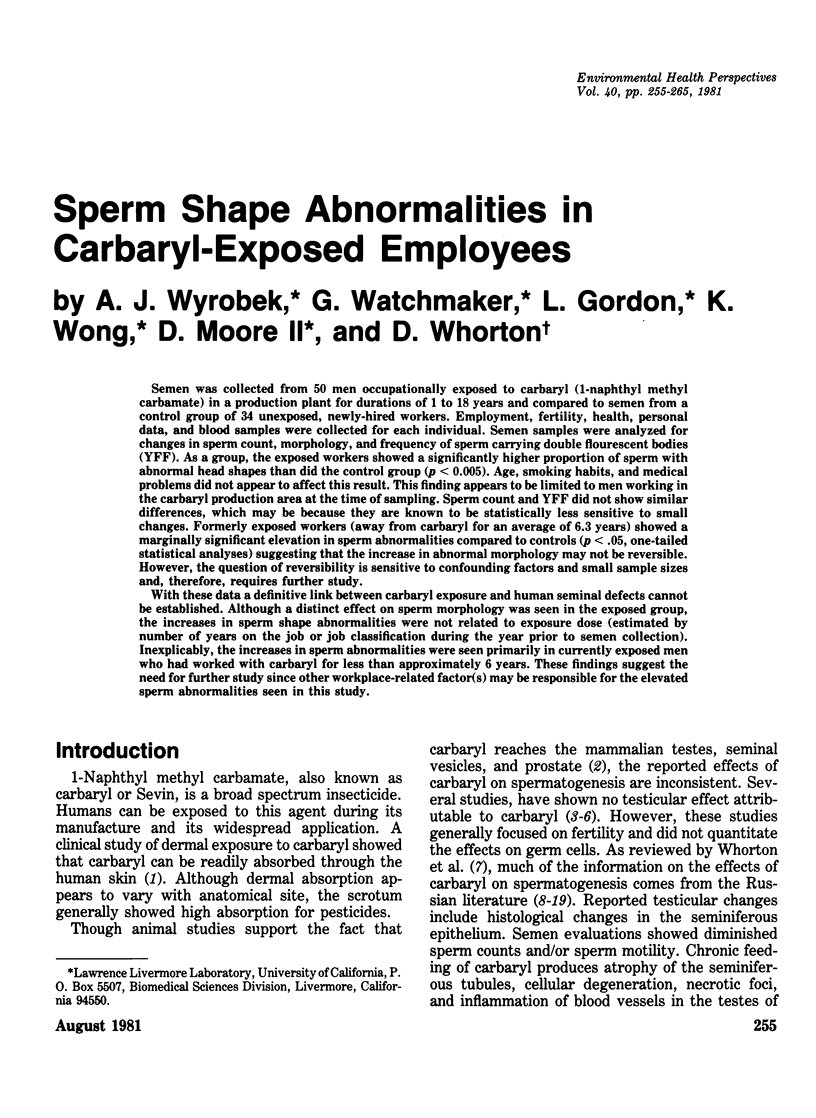
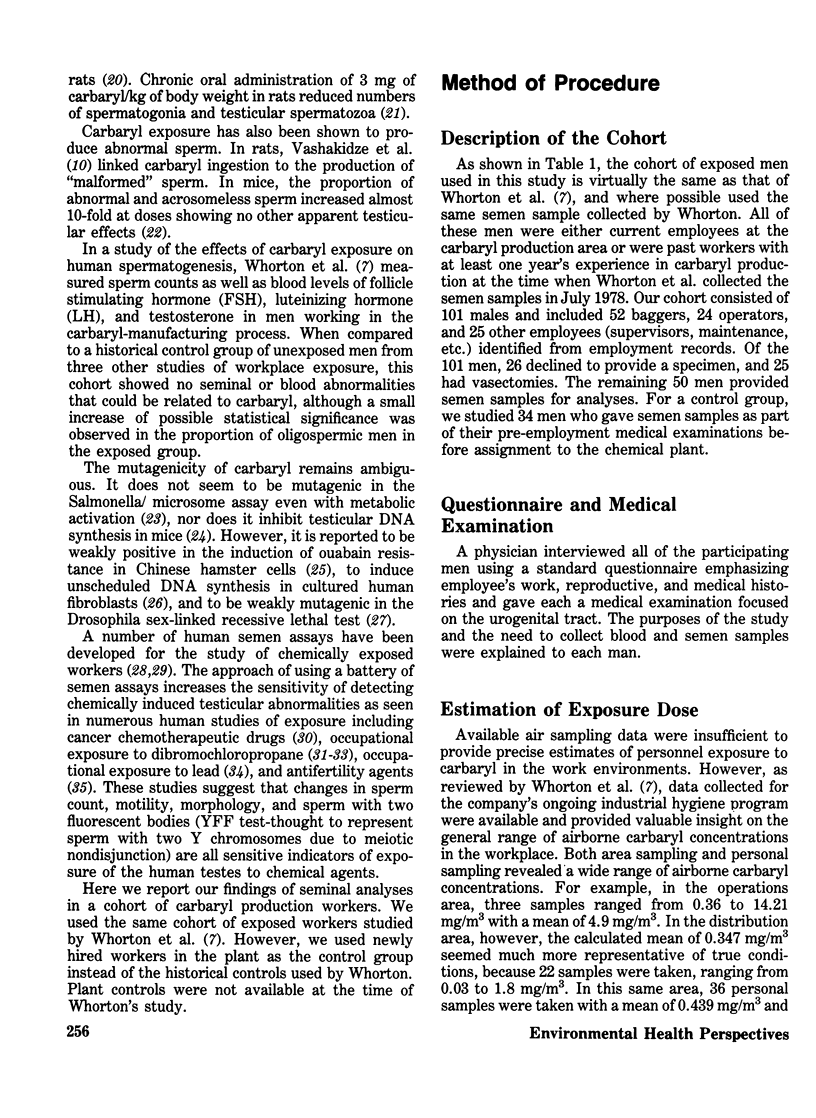
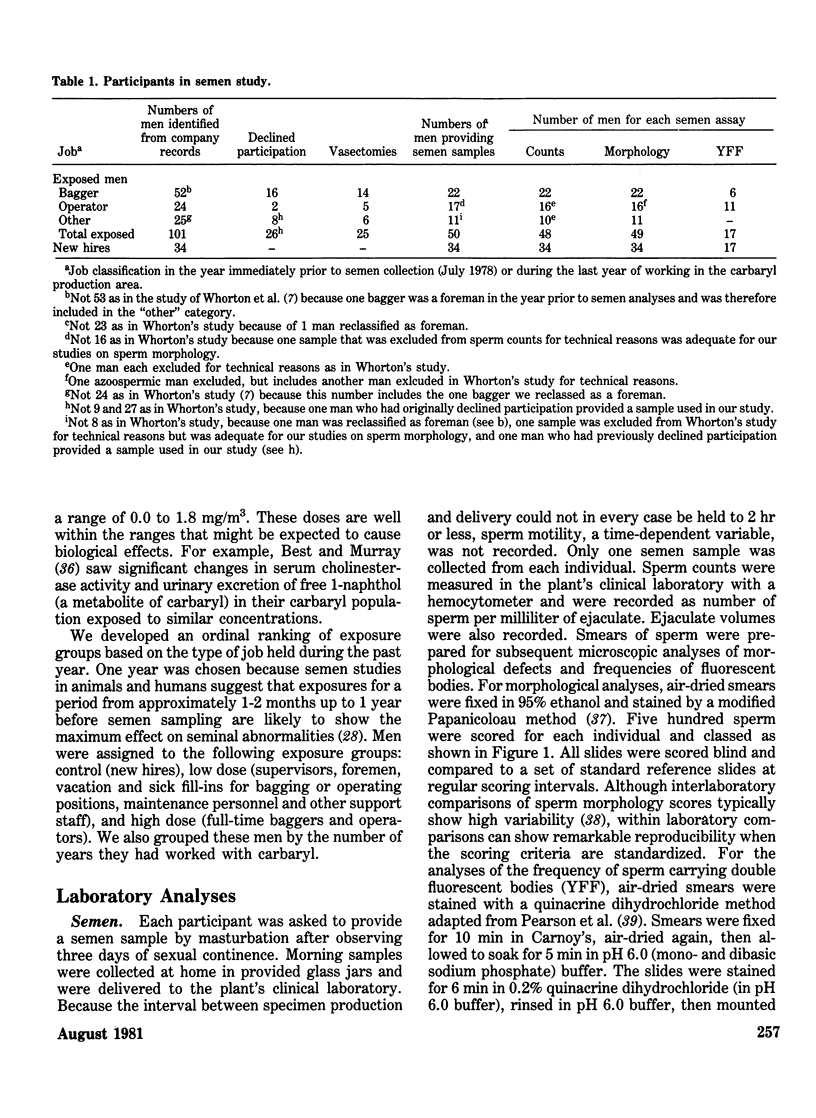
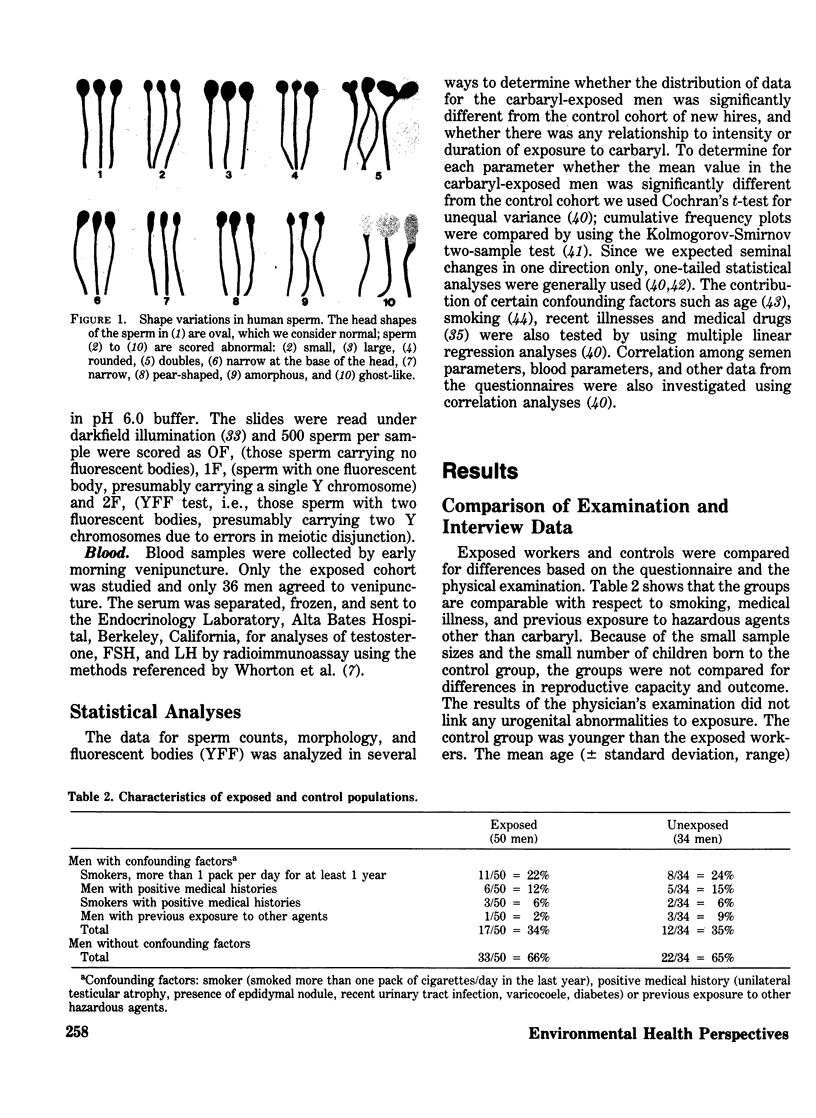
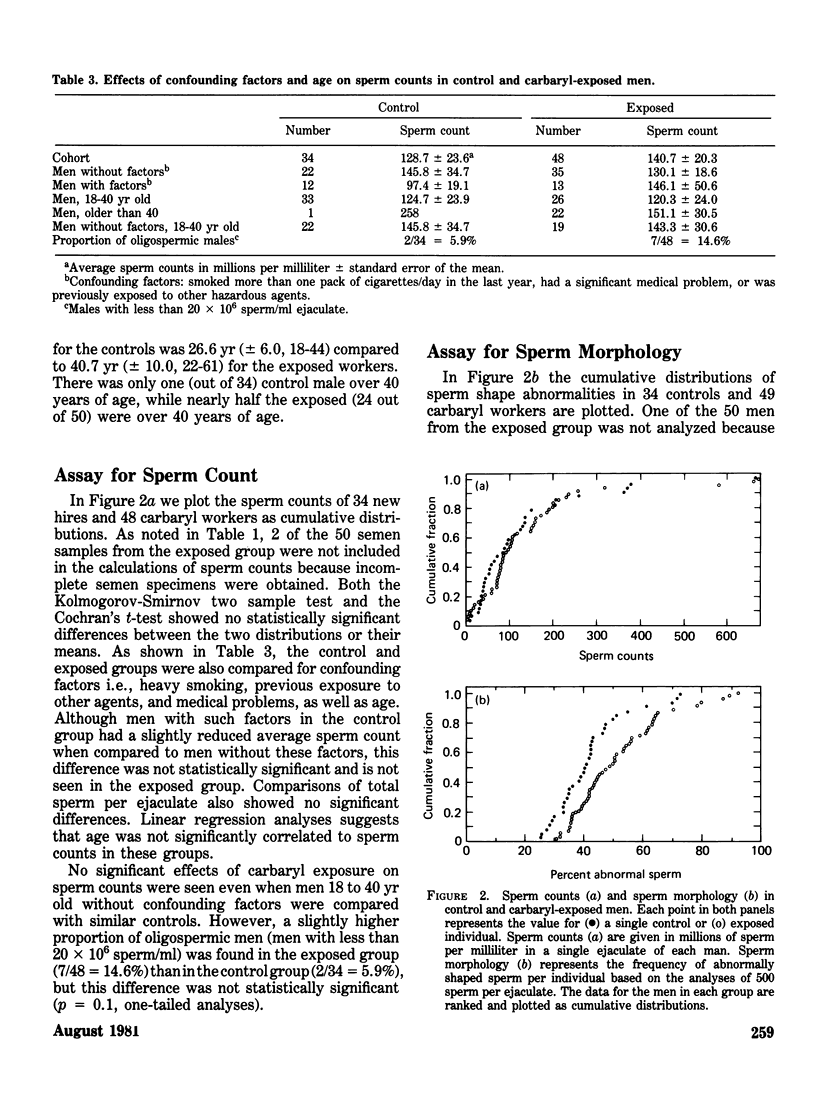
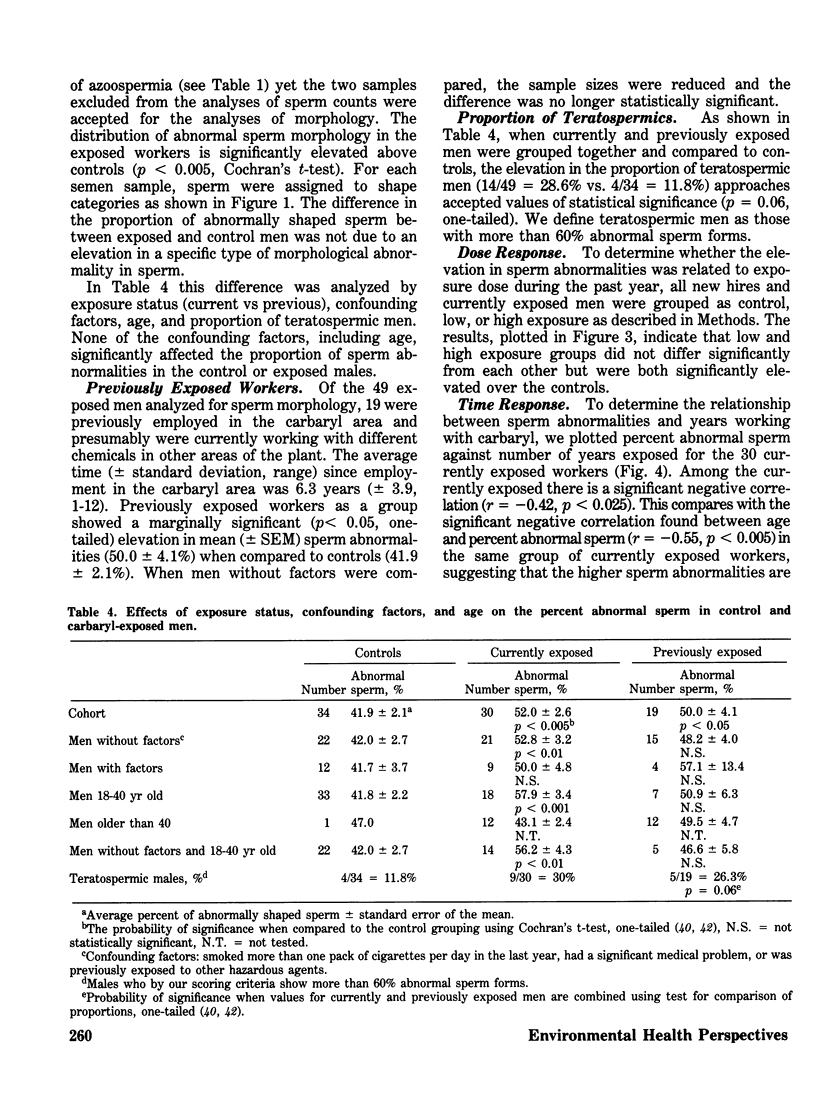
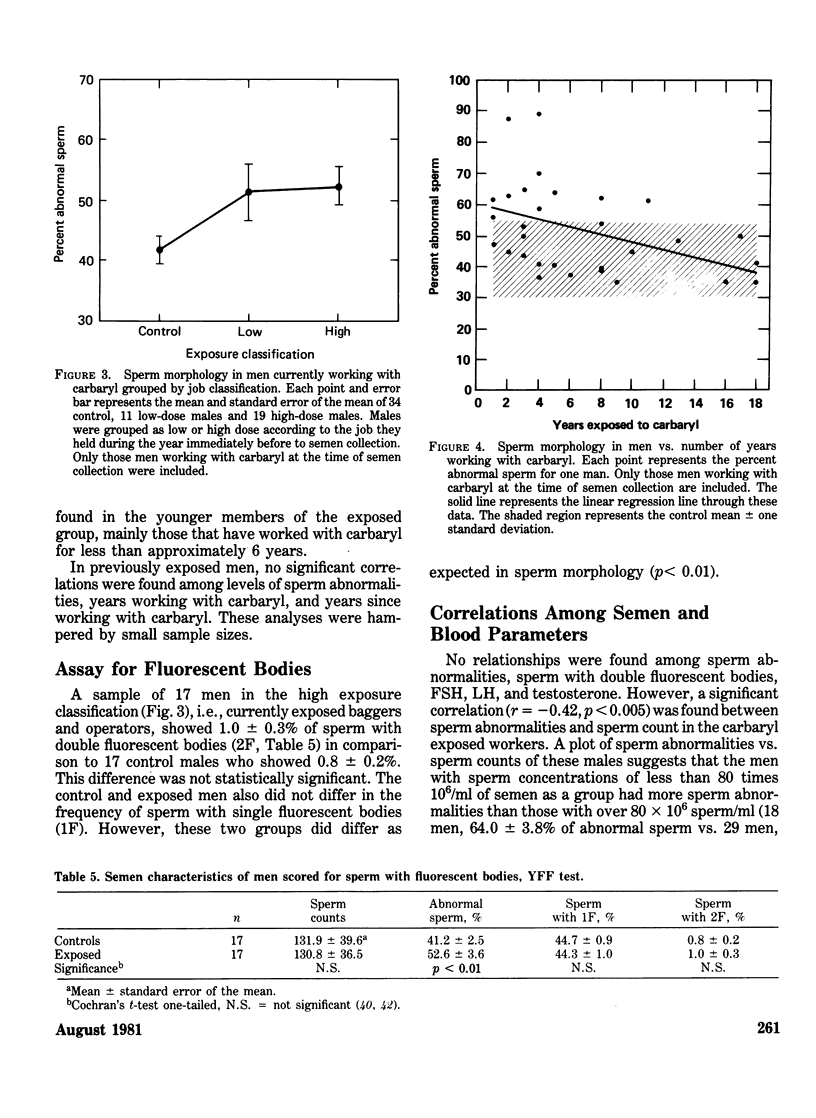

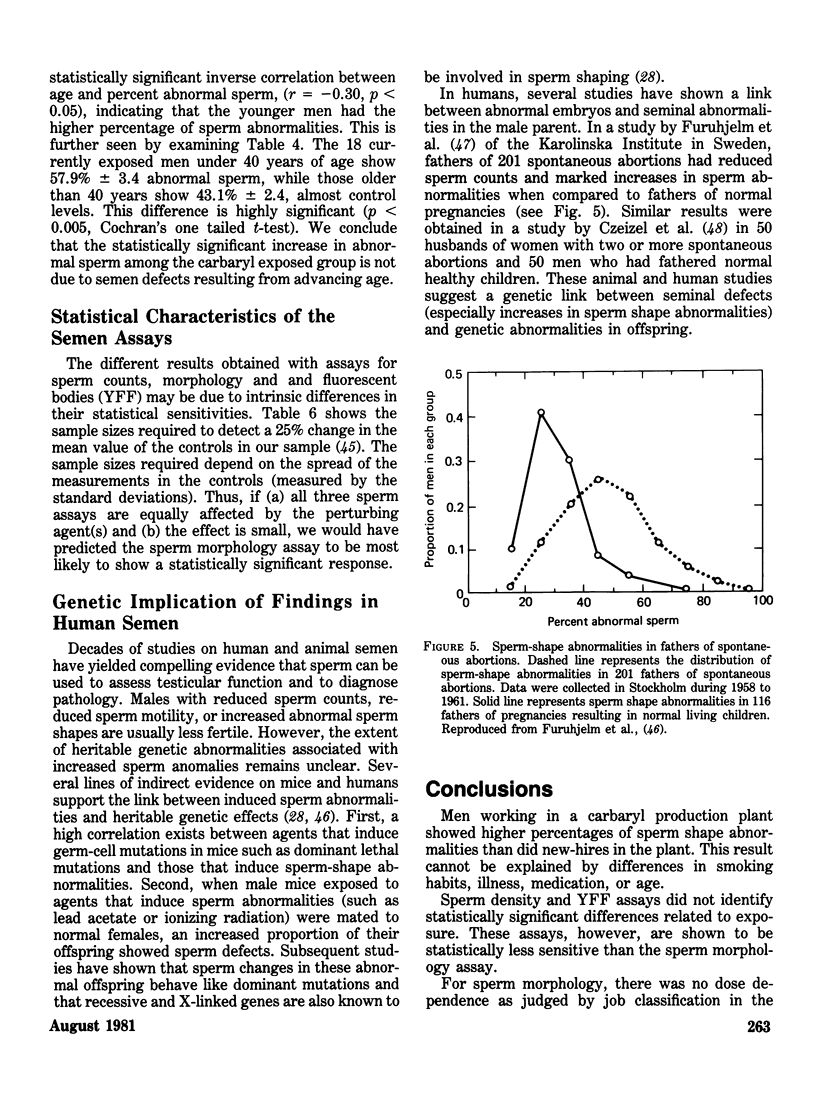
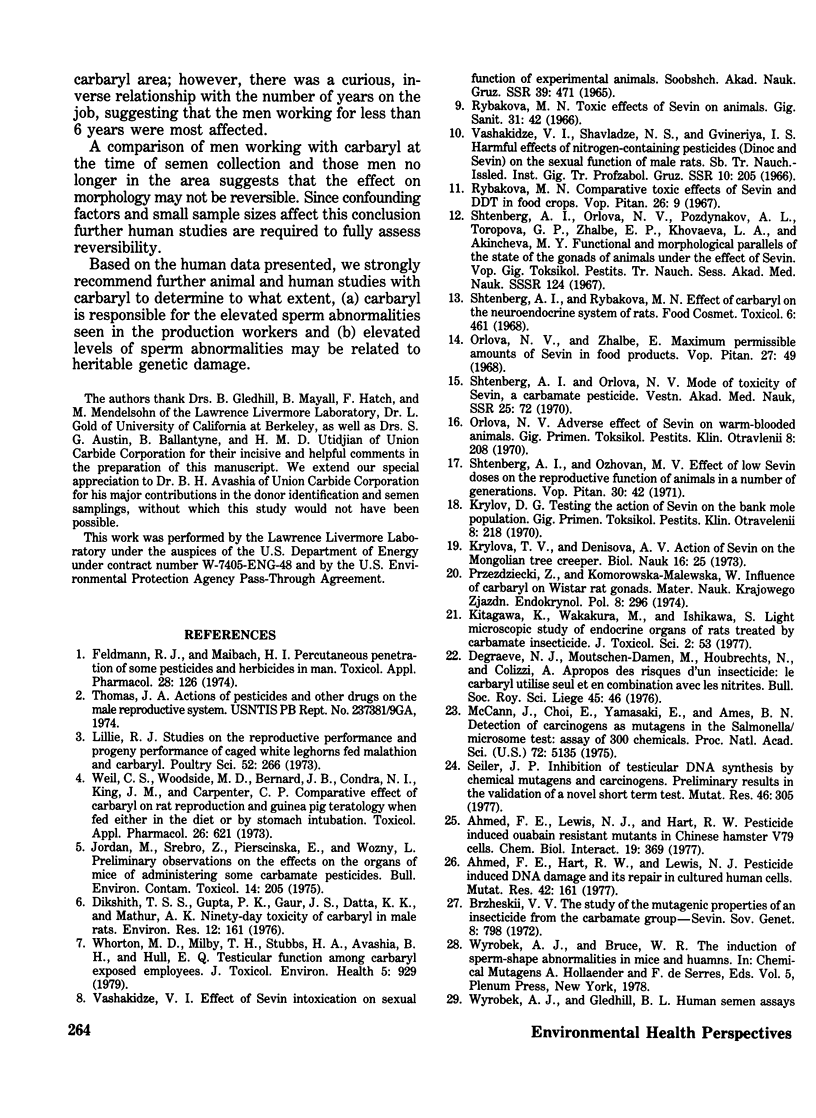
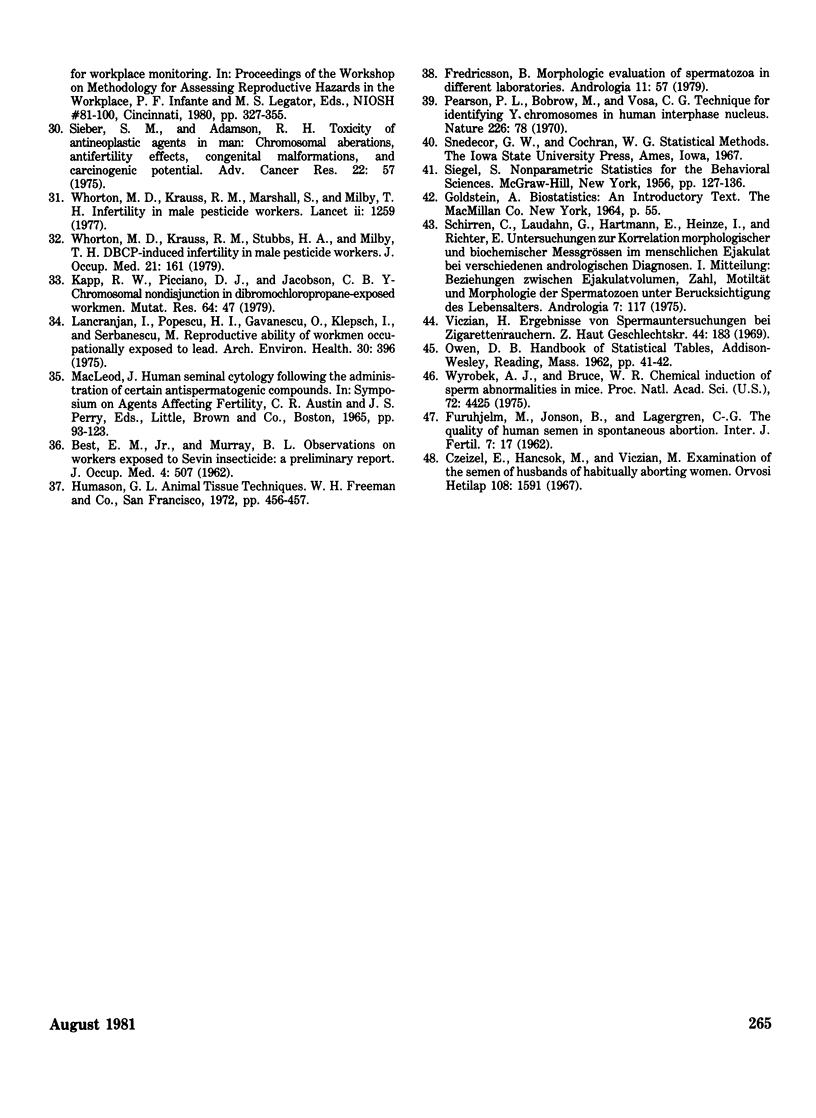
Images in this article
Selected References
These references are in PubMed. This may not be the complete list of references from this article.
- Ahmed F. E., Hart R. W., Lewis N. J. Pesticide induced DNA damage and its repair in cultured human cells. Mutat Res. 1977 Feb;42(2):161–174. doi: 10.1016/s0027-5107(77)80020-1. [DOI] [PubMed] [Google Scholar]
- Ahmed F. E., Lewis N. J., Hart R. W. Pesticide induced ouabain resistant mutants in Chinese hamster V79 cells. Chem Biol Interact. 1977 Dec;19(3):369–374. doi: 10.1016/0009-2797(77)90059-x. [DOI] [PubMed] [Google Scholar]
- BEST E. M., Jr, MURRAY B. L. Observations on workers exposed to Sevin insecticide: a preliminary report. J Occup Med. 1962 Oct;4:507–517. [PubMed] [Google Scholar]
- Brzheskii V. V. The study of the mutagenic properties of an insecticide from the carbamate group--Sevin. Sov Genet. 1974 Jul 1;8(6):798–800. [PubMed] [Google Scholar]
- Dikshith T. S., Gupta P. K., Gaur J. S., Datta K. K., Mathur A. K. Ninety day toxicity of carbaryl in male rats. Environ Res. 1976 Oct;12(2):161–170. doi: 10.1016/0013-9351(76)90019-0. [DOI] [PubMed] [Google Scholar]
- Feldmann R. J., Maibach H. I. Percutaneous penetration of some pesticides and herbicides in man. Toxicol Appl Pharmacol. 1974 Apr;28(1):126–132. doi: 10.1016/0041-008x(74)90137-9. [DOI] [PubMed] [Google Scholar]
- Fredricsson B. Morphologic evaluation of spermatozoa in different laboratories. Andrologia. 1979 Jan;11(1):57–61. doi: 10.1111/j.1439-0272.1979.tb02161.x. [DOI] [PubMed] [Google Scholar]
- Jordan M., Srebro Z., Pierścińska E., Woźny L. Preliminary observations on the effects on the organs of mice of administering some carbamate pesticides. Bull Environ Contam Toxicol. 1975 Aug;14(2):205–208. doi: 10.1007/BF01701315. [DOI] [PubMed] [Google Scholar]
- Kapp R. W., Jr, Picciano D. J., Jacobson C. B. Y-chromosomal nondisjunction in dibromochloropropane-exposed workmen. Mutat Res. 1979 Feb;64(1):47–51. doi: 10.1016/0165-1161(79)90136-5. [DOI] [PubMed] [Google Scholar]
- Lancranjan I., Popescu H. I., GAvănescu O., Klepsch I., Serbănescu M. Reproductive ability of workmen occupationally exposed to lead. Arch Environ Health. 1975 Aug;30(8):396–401. doi: 10.1080/00039896.1975.10666733. [DOI] [PubMed] [Google Scholar]
- Lillie R. J. Studies on the reproductive performance and progeny performance of caged White Leghorns fed malathion and carbaryl. Poult Sci. 1973 Jan;52(1):266–272. doi: 10.3382/ps.0520266. [DOI] [PubMed] [Google Scholar]
- McCann J., Choi E., Yamasaki E., Ames B. N. Detection of carcinogens as mutagens in the Salmonella/microsome test: assay of 300 chemicals. Proc Natl Acad Sci U S A. 1975 Dec;72(12):5135–5139. doi: 10.1073/pnas.72.12.5135. [DOI] [PMC free article] [PubMed] [Google Scholar]
- Orlova N. V., Zhalbé E. P. Eksperimental'nye materialy k voprosu o predel'no podustimykh kolichestvakh sevina v pishchevykh produktakh. Vopr Pitan. 1968 Nov-Dec;27(6):49–55. [PubMed] [Google Scholar]
- Pearson P. L., Bobrow M., Vosa C. G. Technique for identifying Y chromosomes in human interphase nuclei. Nature. 1970 Apr 4;226(5240):78–80. doi: 10.1038/226078a0. [DOI] [PubMed] [Google Scholar]
- Rybakova M. N. O toksicheskom deistvii sevina na zhivotnyi orrganizm. Gig Sanit. 1966 Sep;31(9):42–47. [PubMed] [Google Scholar]
- Rybakova M. N. Sravnitel'noe toksicheskoe deistvie sevina i DDT, primeniaemykh dlia obrabotki prodovol'stvennykh kul'tur. Vopr Pitan. 1967 Mar-Apr;26(2):9–15. [PubMed] [Google Scholar]
- Schirren C., Laudahn G., Hartmann E., Heinze I., Richter E. Untersuchungen zur Korrelation morphologischer und biochemischer Messgrössen im menschlichen Ejakulat bei verschiedenen andrologischen Diagnosen I. Mitteilung: Beziehungen zwischen Ejakulatvolumen, Zahl, Motiltät und Morphologie der Spermatozoen unter Berücksichtigung des Lebensalters. Andrologia. 1975;7(2):117–125. [PubMed] [Google Scholar]
- Seiler J. P. Inhibition of testicular DNA synthesis by chemical mutagens and carcinogens. Preliminary results in the validation of a novel short term test. Mutat Res. 1977 Aug;46(4):305–310. doi: 10.1016/0165-1161(77)90007-3. [DOI] [PubMed] [Google Scholar]
- Shtenberg A. I., Ozhovan M. V. Vliianie malykh doz sevina na generativnuiu funktsiiu zhivotnykh v riade pokolenii. Vopr Pitan. 1971;30(1):42–49. [PubMed] [Google Scholar]
- Shtenberg A. I., Rybakova M. N. Effect of carbaryl on the neuroendocrine system of rats. Food Cosmet Toxicol. 1968 Dec;6(4):461–467. doi: 10.1016/0015-6264(68)90136-3. [DOI] [PubMed] [Google Scholar]
- Sieber S. M., Adamson R. H. Toxicity of antineoplastic agents in man, chromosomal aberrations antifertility effects, congenital malformations, and carcinogenic potential. Adv Cancer Res. 1975;22:57–155. doi: 10.1016/s0065-230x(08)60176-1. [DOI] [PubMed] [Google Scholar]
- Viczián M. Ergebnisse von Spermauntersuchungen bei Zigarettenrauchern. Z Haut Geschlechtskr. 1969 Mar 1;44(5):183–187. [PubMed] [Google Scholar]
- Weil C. S., Woodside M. D., Bernard J. B., Condra N. I., King J. M., Carpenter C. P. Comparative effect of carbaryl on rat reproduction and guinea pig teratology when fed either in the diet or by stomach intubation. Toxicol Appl Pharmacol. 1973 Dec;26(4):621–638. doi: 10.1016/0041-008x(73)90300-1. [DOI] [PubMed] [Google Scholar]
- Whorton D., Krauss R. M., Marshall S., Milby T. H. Infertility in male pesticide workers. Lancet. 1977 Dec 17;2(8051):1259–1261. doi: 10.1016/s0140-6736(77)92665-4. [DOI] [PubMed] [Google Scholar]
- Whorton D., Milby T. H., Krauss R. M., Stubbs H. A. Testicular function in DBCP exposed pesticide workers. J Occup Med. 1979 Mar;21(3):161–166. [PubMed] [Google Scholar]
- Whorton M. D., Milby T. H., Stubbs H. A., Avashia B. H., Hull E. Q. Testicular function among carbaryl-exposed exployees. J Toxicol Environ Health. 1979 Sep;5(5):929–941. doi: 10.1080/15287397909529802. [DOI] [PubMed] [Google Scholar]
- Wyrobek A. J., Bruce W. R. Chemical induction of sperm abnormalities in mice. Proc Natl Acad Sci U S A. 1975 Nov;72(11):4425–4429. doi: 10.1073/pnas.72.11.4425. [DOI] [PMC free article] [PubMed] [Google Scholar]



